James M. Jackson Sends Seamus McCree on a New Adventure
 Interview with Paula Gail Benson
Interview with Paula Gail Benson
James M. Jackson’s suspense/thriller series features protagonist Seamus McCree, a former analyst who specializes in financial crimes. So far, Jim’s work includes seven novels (Ant Farm, Bad Policy, Cabin Fever, Doubtful Relations, Empty Promises, False Bottom, and the recently released Granite Oath), and two novellas (Furthermore and Low Tide at Tybee). In Granite Oath, Seamus’ clients are his eight-year-old granddaughter Megan and her new best friend Valeria, whose mother and Nana are illegal immigrants. When Megan tells Valeria that her grandfather’s name means investigator, he has to explain the difference between “Seamus” and “Shamus.” What Seamus learns while trying to find Valeria’s missing mother is that illegals have to deal with a secretive lifestyle that deprives them of basic necessities and exposes them to danger.
Today, the Stiletto Gang welcomes Jim to talk about Seamus’ latest adventure.
Seamus’ business background is as a financial analyst. How does his perspective influence his methods of investigation?
A hammer initially approaches the world as though everything it meets is a nail. Only when an object clearly cannot be a nail does the hammer consider other alternatives. Seamus is more sophisticated, but if he does not see an obvious explanation for someone’s behavior, his inclination is to try to understand the individual’s financial motivations. He uses his deep knowledge of monetary shenanigans and financial systems to “follow the money” in ways most investigators cannot.
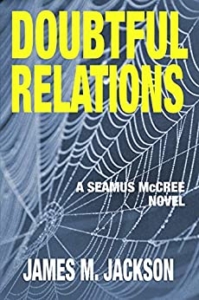 Family is an important aspect of Seamus’ life. How do interactions with the various members of Seamus’ extended family (girlfriends, ex-wife, son, granddaughter, mother, and step-sister) help reveal his character traits?
Family is an important aspect of Seamus’ life. How do interactions with the various members of Seamus’ extended family (girlfriends, ex-wife, son, granddaughter, mother, and step-sister) help reveal his character traits?
Granite Oath is told from Seamus’s first-person point of view. This provides the reader direct insight into his thinking and reactions. While this gives a valuable insight into what makes Seamus tick, none of us see ourselves accurately. Seamus would have us believe that he is a hermit-wannabe whose word is his bond. His ex-wife corroborates that Seamus will “turn a pinkie swear into a granite oath that nothing less than a glacier can crush.”
Yet his relationships with his family show a different side to Seamus. He dotes on his granddaughter, and with her we see a more playful side of Seamus. He’s always looking for an opportunity to expand her experiences (even if Megan’s parents would object if they knew). His family and “girlfriend,” as you call Niki, take great joy in pointing out Seamus’s foibles, forcing him to reconsider his perspective. The ending (which I will not spoil) involves another character putting words in Seamus’s mouth about his feelings that he would never speak, but we as readers know to be true.
When Seamus’ mother speaks seriously to him, she uses his full name: Seamus Anslem McCree. I remember you saying your mother called you by your full name when you were in trouble. Did you draw upon some of your mother’s qualities in creating Seamus’ mother?
Good memory, Paula. I think many parents fall into that same behavior of using their kid’s full name to emphasize the gravity of a situation. When my mother confronted a DEFCON 1 (the worst trouble) situation, she’d be so mad, she’d run through the names of my sisters, my father, even our dog before finally landing on my full name as the culprit. That’s when I needed to slide a book down the back of my pants to mitigate the coming corporal punishment!
Now that I think about it, one major strength that my mother and Seamus’s share is both are/were survivors. Life was not always easy for either of them, but after each setback, they picked themselves up and carried on.
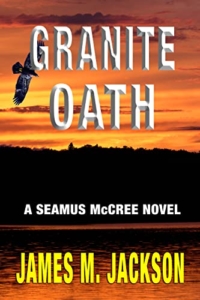 Granite Oath is particularly intriguing because Seamus, in seeking to help Valeria and her family, must confront suspicion and resistance as a male caring for young females who are not his own children. His situation seems most precarious when he takes Valeria to see a doctor. Did you research this issue or depend upon your own observations to write these scenes?
Granite Oath is particularly intriguing because Seamus, in seeking to help Valeria and her family, must confront suspicion and resistance as a male caring for young females who are not his own children. His situation seems most precarious when he takes Valeria to see a doctor. Did you research this issue or depend upon your own observations to write these scenes?
When Jan and I traveled with our granddaughters, she had signed permission from the child’s parents, allowing her to act in loco parentis. When we crossed through customs, we made sure Jan was driving to answer the agent’s questions. Agents always asked—often of the child—what my relationship to the girl was.
I attended an informational meeting a few years ago about how to spot human trafficking. An older guy with a young woman or girl, especially one who appears timid or scared, is a huge trigger. Even with my daughter, I’ve had people ask her questions designed to make sure she was not under duress.
In your website biography, you say, “If I can’t be outside enjoying nature, I want to be able to see outside.” Those of us who know you have always appreciated your excellent nature and bird photography. How has seeing the world through a camera’s eye helped your writing?
A good photograph tells a story. Different photographers, when presented with the same scene, will tell different stories beginning with where they focus the lens and what shutter speed and depth of field they choose. Do you focus on the bee, the flower from which the bee is harvesting pollen, or the meadow that includes the flower and the bee?
What I’ve learned is often when I zoom in, I can imply the larger picture with a single aspect. For example, if I focus on the bee’s front, showing pollen on its face and legs, while blurring or cropping everything else, those specific details imply a complete bee, and a flower, and a meadow. I may not have seen that when I took the picture, but through editing, I can crop out the extraneous and highlight what I want the viewer to pay attention to.
Understanding that process helps me turn my early drafts into finished manuscripts. I look for those same opportunities to imply a larger whole through a single detail and crop away anything extraneous—unless I want to hide a clue or create a red herring. Then I widen the lens to hide the telling detail in a cornucopia of extraneous detail, but it will be there if you look/read closely enough.
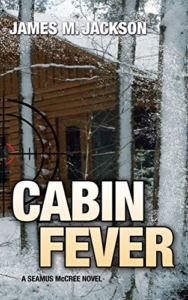
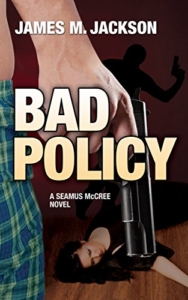
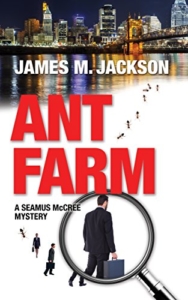 Your novel titles progress alphabetically. Do you envision 26 Seamus’ books?
Your novel titles progress alphabetically. Do you envision 26 Seamus’ books?
No. Sue Grafton only made it to twenty-five, and she started at a much younger age than I. I have a tentative title and core idea for the “H” novel which revolves around Seamus and his nemesis, the Happy Reaper, meeting one final time. But Granite Oath needs to sell sufficiently well to justify the effort.
How did writing the Seamus’ novellas differ from writing the novels?
My novels are four to five times longer than my novellas (and twenty to thirty times longer than a typical short story). I enjoy creating myriad complications and twists and turns between the inciting incident and the story’s conclusion. With novellas, the primary storyline requires most of the words, leaving only a few for a single subplot. I find it helpful with novellas to constrict the elapsed time of the story.
What would be the most important impression you want readers to take away from Granite Oath?
Every reader brings their individual experiences to a novel. Given that, each discovers a different story, none of which is the story I thought I wrote. The best I can hope is that people will enjoy my story and read it to its conclusion. Then it becomes like the flapping of a butterfly’s wings in Africa: we’ll never know how reading Granite Oath affected anything, but we know it will.
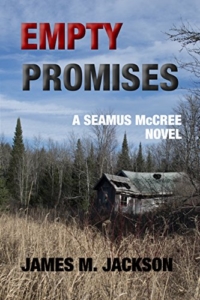
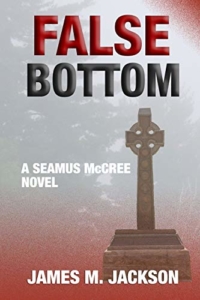 Short Biography:
Short Biography:
James M. Jackson authors the Seamus McCree series. Full of mystery and suspense, these domestic thrillers explore financial crimes, family relationships, and what happens when they mix. August 2022 saw publication of the 7th novel in the series, Granite Oath. (Click here for information and purchase links.)
Jim splits his time between the wilds of Michigan’s Upper Peninsula and the city life in Madison, WI. You can find more information about Jim and his books at https://jamesmjackson.com or contact him via email.


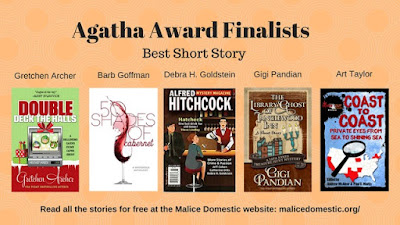

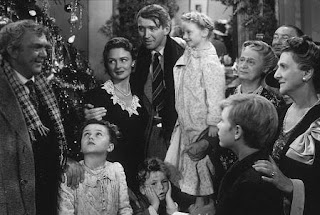
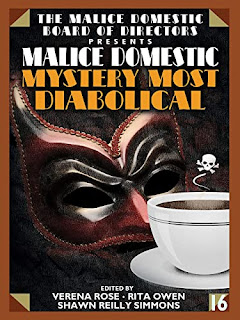
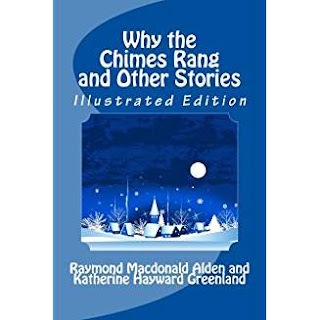
Great interview and I enjoyed GRANITE OATH.
Thanks, Dru. And thanks to Paula for devising such interesting questions. I’ll stop by periodically and respond to comments and questions.
Jim, thank you for such a great book and for spending time with the Stiletto Gang. Dru, how wonderful to hear your endorsement. Thank you.
So much enjoyed this interview! Congrats to Jim on the new book—and all his success!
Thanks so much, Art. Great to hear from you!
Wonderful interview. Paula’s questions were great, and Jim’s answers, superb. I’m inspired to read the whole alphabet!
Saralyn — I know, wonderful questions, not the kind I normally get asked.
Enjoyed Granite Oath! Keep Seamus’ adventures coming.
Thanks, Debra. I have some ideas for the Happy Reaper’s return.
Nice to meet an author new to me. Thanks for the interview, Paula.
Gay — Isn’t Paula superb at making introductions?
Art, Saralyn, Debra, and Gay — I’m so glad to see your comments! Thank you for taking the time to stop by. Jim’s books are all terrific. Seamus is a wonderful protagonist. Many thanks for the kind words about the interview. It’s easy when Jim provides so much great background to explore.